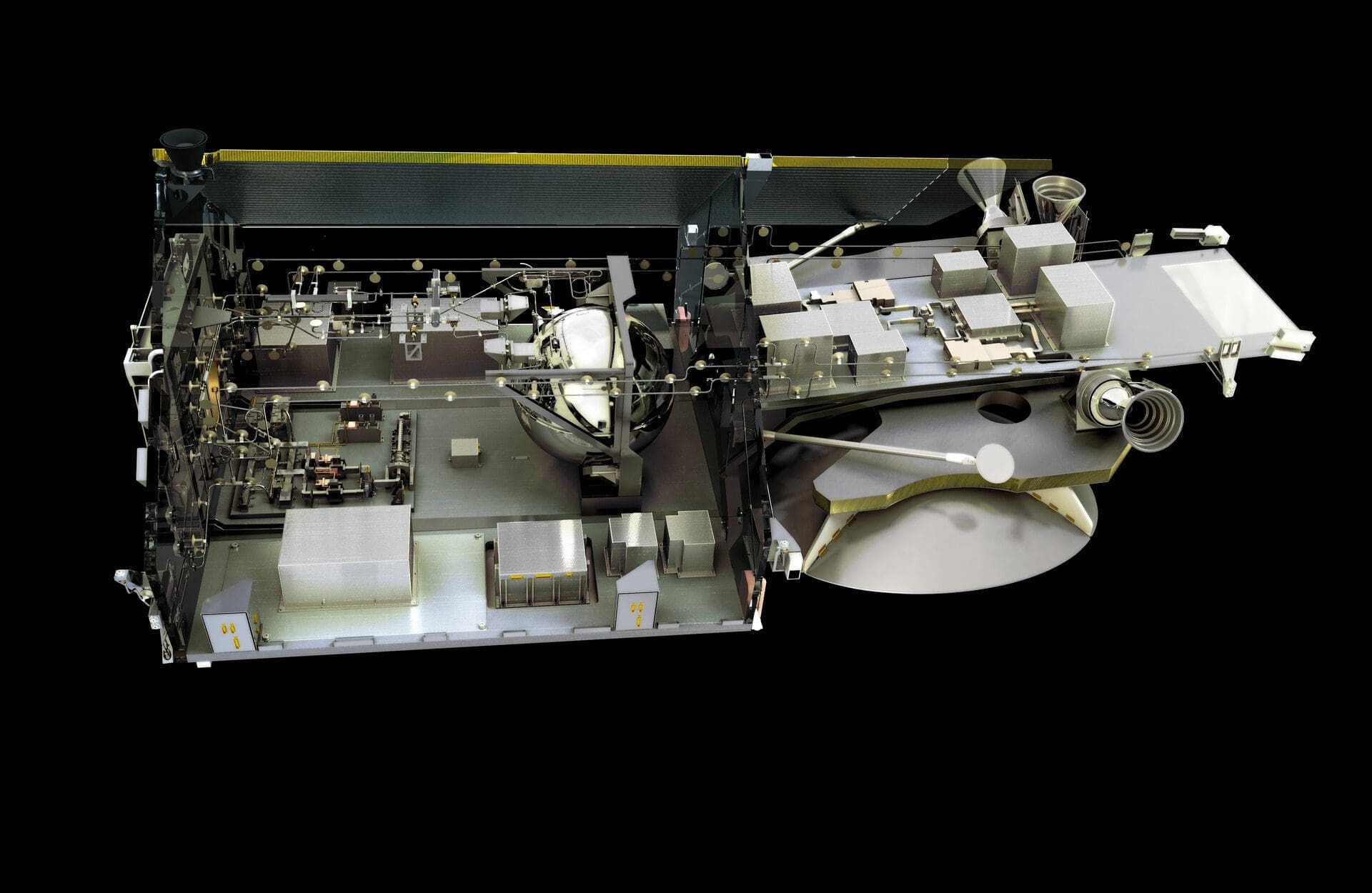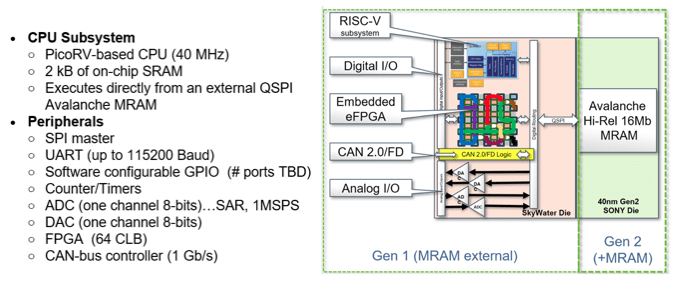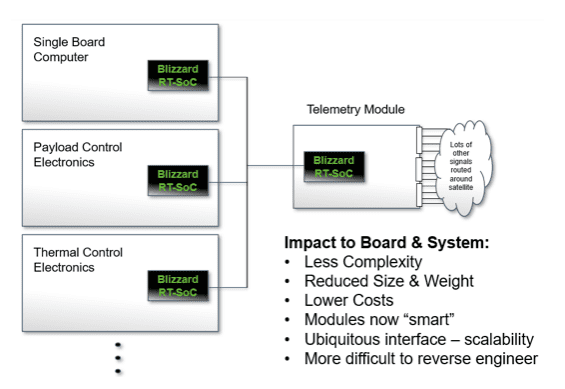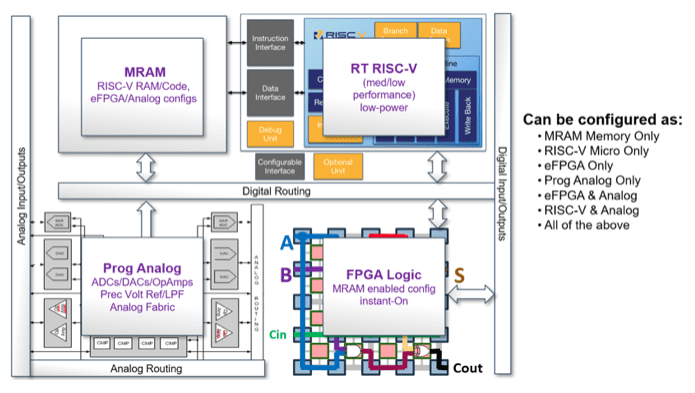
The deployment of mega-constellations and small sats and their new usage model based on reconfigurability on the fly during the life of the vehicle is driving a change in how they are designed.
In this 3-part series, we will look at how adaptive configurability using programmable SoC’s becomes the tool of choice in the repertoire of system designers to speed up design and qualification of LEO satellites:
Evolution of Control Systems in Satellites
The current systems using discrete solutions for common measurement and control
applications or small FPGA/ASIC solutions for real time applications that are cumbersome and vulnerable to failure can now be replaced by a singular, highly configurable SoC.
Avalanche’s Space Grade SoC Architecture
How a single programmable SoC can replace numerous functions and offer a “future proof” design capable of in-orbit upgrade and optimized SWAP-C (size, weight, power and cost).
SWAP-C Optimization Made Possible by Blizzard RT-SoC
Not only does the board-level Size, Weight, Power and Cost (SWAP-C) profile improve by using Avalanche’s Blizzard SoC, system designers can also appreciate the benefits of overall system level reuse of a cost effective, flexible SoC platform, with implications to design, test, qualification and more scalable capability in flight.
After careful study of the Rad Tolerant Blizzard SoC functional blocks, we will now shift toward specific use case scenarios on common satellite subsystems and talk to the resulting impact of this uniquely flexible architecture. Not only does the board-level Size, Weight, Power and Cost (SWAP-C) profile improve over traditional architectures by virtue of thoughtful integration, but there are also appreciable benefits to overall system-level design, integration, test and qualification through design reuse of a cost-effective, feature-rich and flexible SoC platform architecture. A quick refresher on the key features of the first two generations of RT-SoC depicted in Figure 1, with target sampling of Gen 1 in 4Q22 and Gen 2 in 2Q23.

Figure 1: Generations 1 and 2 of the Blizzard RT-SoC
Looking at functional modules commonly found in satellite subsystems (examples shown below), part of their role is to generate important status monitoring signals such as temperatures, voltage levels, currents, and other analog signals, which are converted into digital for analyzing state of health on the modules themselves and the overall satellite. Given the heavily matrixed sensor fusion required, this becomes a very I/O intensive proposition as seen in Figure 2 below requiring a box just to bring out all the I/Os using numerous expensive long lead connectors.
Common Satellite System Modules:

Figure 2: Current Module Implementation Examples
As you can see in the above with just a small subset of modules in a satellite, the number of sensing and control connections rapidly expands the complexity, especially as you scale the number of functional modules. However, by using the RT-SoC this conversion can now be done locally on the module leaving only the digital data to transmit over a simple serial bus for analysis, thereby eliminating signal conditioning and reducing the number of cable harness and connectors. This consolidation eliminates the mechanical and electrical complexities of managing so many discrete analog IOs for the satellite with obvious SWAP-C optimization, more rugged control, and a simplified system integration and test flow as each module can easily be tested within a standard rack. Figure 3 depicts a representative simplification of the design example enabled by the RT-SoC.

Figure 3: Design Simplification Made Possible with Blizzard RT-SoC
By having an RT-SoC on each satellite module, there are also noteworthy system level functional improvements made possible with distributed control and sensing, enabling Space IoT. Not only does the added intelligence at the module level offload mundane tasks from the main Single Board Computer (SBC), instead only alerting it if module conditions exceed normal operating thresholds, but it also provides a basis for greater scalability and customization through modularity. By having a flexible device architecture as in the Blizzard RT-SoC, including configurable glue logic without the expense and power budget of high-performance FPGAs, it can allow personalization of the module that can be adapted during various phases of design, system integration, test and even in flight. This not only allows system developers to focus on their valuable IP, not recreating the veritable hardware wheel for every design incantation, but it also provides a future-proof platform that can evolve with ever-changing threats and mission needs. There is also an element of design security provided by personalized module IP vs easy to reverse engineer discrete components.

Figure 4: Highly Configurable Architecture
And finally, by stepping up levels of integration to achieve board level SWAP-C optimization and distributed intelligence, the RT-SoC also simplifies board layout and reduces cost and complexity by shrinking part counts on each module and the satellite system, which also facilitates a rapid transition through Parts, Material, Process Control Boards (PMPCB) processes, once qualified and on the preferred parts list. Also, with design reuse from module to module, design time and costs are improved, but so are system integration, test, assembly and qualification.
In summary, as Avalanche Technology’s leadership high-reliability MRAM offers the space community’s best SWAP-C profile and endurance for Non-Volatile RAM, our innovative Rad Tolerant Blizzard SoC brings additional innovation, optimization and flexibility to enable satellite architectures to advance at a pace that is out of this world. All of this is offered with a price point set to democratize Space.
